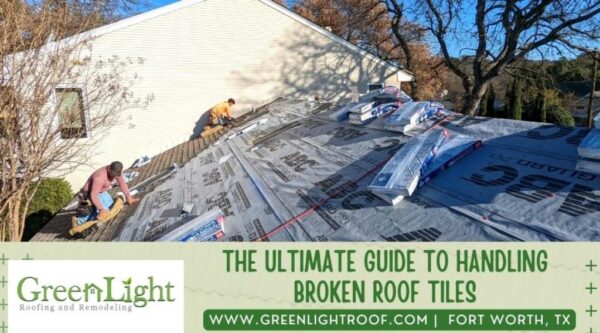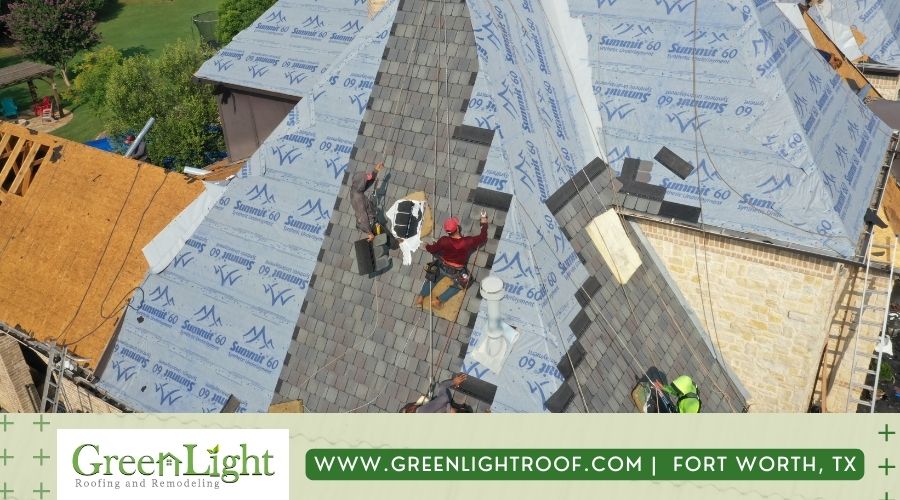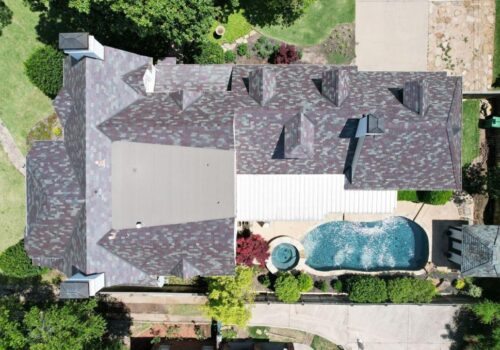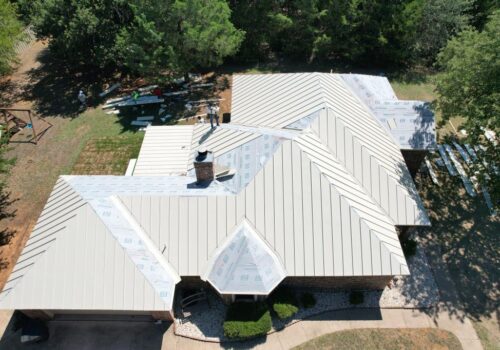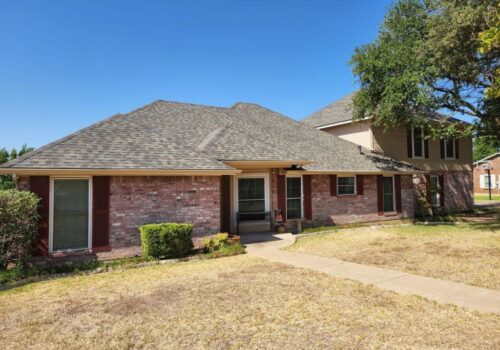Roof tiles are an essential component of any home's structure, providing protection from the elements and enhancing the overall aesthetic appeal. However, over time, roof tiles can become damaged due to various factors such as weather conditions, age, or accidents. In this comprehensive guide, we will walk you through the process of handling broken roof tiles, from identification to repair and maintenance.
Whether you're a DIY enthusiast or looking to hire professional help, this guide will equip you with the knowledge and steps required to tackle the issue effectively.
Identifying Broken Roof Tiles
Before proceeding with any repairs, it's crucial to identify the broken roof tiles. Here are some signs to look out for:
- Visible cracks or chips: Inspect your roof visually to identify any visible cracks or chips on the tiles.
- Leaks or water stains: If you notice water stains or leaks inside your home, it could be an indication of broken tiles on the roof.
- Missing tiles: Check for any gaps or missing tiles on your roof.
Safety Precautions
Safety should always be a top priority when dealing with roof repairs. Follow these safety precautions:
- Use protective gear: Wear gloves, safety glasses, and non-slip shoes to protect yourself from potential hazards.
- Ensure stable footing: Use a sturdy ladder and position it on a flat, stable surface. Have someone assist you when climbing up and down.
- Avoid working in adverse weather conditions: Wait for a clear, calm day to perform any repairs on your roof.
Tools and Materials Needed
To handle broken roof tiles effectively, you will need the following tools and materials:
- Safety equipment: Gloves, safety glasses, non-slip shoes.
- Ladder: Sturdy ladder for accessing the roof safely.
- Roofing hammer: Used for removing and replacing tiles.
- Chisel: Helps to lift and remove damaged tiles.
- Replacement tiles: Have extra tiles on hand that match your existing roof tiles.
- Roofing adhesive: Used to secure tiles in place.
Removing Broken Roof Tiles
When removing broken roof tiles, follow these steps:
- Secure the area: Clear any debris from the surrounding area and ensure a safe workspace.
- Start from the top: Begin removing tiles from the highest point of the damaged area and work your way down.
- Use the chisel: Carefully lift and remove the broken tile using a chisel.
- Inspect the underlayment: Check the condition of the underlayment and replace it if damaged.
Assessing the Damage
After removing the broken tiles, assess the extent of the damage:
- Inspect adjacent tiles: Check the surrounding tiles for any signs of damage or weakness.
- Examine the underlayment: Ensure that the underlayment is intact and free from any significant damage.
- Look for water damage: Check for signs of water damage or leaks in the underlying structure.
Repairing or Replacing Broken Roof Tiles
Based on the assessment, you have two options: replacing or repairing the roof tiles.
A. Repairing Roof Tiles
- Clean the area: Remove any debris or dirt from the surface of the tiles.
- Apply roofing adhesive: Use a roofing adhesive to fix minor cracks or chips in the tiles.
- Smooth the surface: After applying the adhesive, smooth out the surface using a putty knife.
- Allow time to dry: Give the adhesive enough time to dry and cure before applying any additional treatments.
B. Replacing Roof Tiles
- Clean the area: Clear the area of any debris or loose tiles.
- Apply roofing adhesive: Apply roofing adhesive to the back of the replacement tile.
- Secure the new tile: Carefully place the new tile in position, ensuring it aligns with the existing tiles.
- Press down firmly: Apply firm pressure to secure the tile in place.
- Allow time to dry: Give the adhesive sufficient time to dry and set.
Securing and Realigning Tiles
Once the broken tiles have been replaced or repaired, it's essential to secure and realign the surrounding tiles.
- Check alignment: Ensure that the newly replaced or repaired tiles align properly with the existing tiles.
- Use roofing adhesive: Apply roofing adhesive around the edges of the neighboring tiles to secure them in place.
- Press down firmly: Press down firmly on the tiles to ensure a tight fit and proper adhesion.
Reinforcing the Roof
To prevent future tile damage and reinforce your roof's integrity, consider the following steps:
- Inspect and reinforce: Regularly inspect your roof for signs of weakness or potential issues.
- Trim overhanging branches: Remove any overhanging branches that may cause damage during storms or high winds.
- Clean gutters: Keep your gutters free from debris to ensure proper drainage and prevent water buildup.
- Consider protective coatings: Apply a protective coating to your roof to enhance durability and resistance to damage.
Maintaining Your Roof
Proper maintenance is key to prolonging the lifespan of your roof and minimizing the risk of broken tiles. Follow these maintenance tips:
- Regular inspections: Inspect your roof at least twice a year, checking for any signs of damage or wear.
- Clean debris: Remove leaves, twigs, and other debris from your roof to prevent clogging and potential damage.
- Address issues promptly: If you notice any damage or signs of wear, address the problem promptly to avoid further complications.
- Schedule professional inspections: Consider hiring a professional roofing contractor to perform regular inspections and maintenance.
Hiring Professional Help
While some roof repairs can be handled as DIY projects, certain situations may require professional expertise. When to consider hiring a professional:
- Extensive damage: If the damage to your roof is extensive or beyond your level of expertise, it's best to seek professional help.
- Complex repairs: Some repairs, such as structural issues or extensive underlayment damage, require specialized knowledge and equipment.
- Safety concerns: If you're uncomfortable working at heights or lack the necessary safety equipment, hiring a professional is recommended.
Conclusion: Broken Roof Tiles
Handling broken roof tiles is an essential aspect of maintaining the integrity and functionality of your roof. By following the steps outlined in this guide, you can confidently identify, repair, and replace broken roof tiles. Whether you choose to tackle the repairs yourself or hire professional help, prioritize safety and proper maintenance to ensure the longevity of your roof.
FAQs
How often should I inspect my roof for broken tiles?
It's recommended to inspect your roof at least twice a year, ideally in spring and fall, to catch any issues early on.
Can I replace a single broken tile, or should I replace the entire section?
In most cases, you can replace a single broken tile without replacing the entire section. However, if you notice extensive damage or a high number of broken tiles in one area, it might be more practical to replace the entire section.
Can I use any type of roofing adhesive to secure the tiles?
It's essential to use a roofing adhesive specifically designed for tile repairs. Consult with a roofing professional or check the manufacturer's recommendations for the best adhesive to use.
Are there any specific maintenance tasks I should perform after repairing broken roof tiles?
After repairing broken roof tiles, it's recommended to perform regular roof maintenance tasks such as cleaning debris, inspecting for leaks, and addressing any other issues promptly.
How long can a repaired or replaced roof tile last?
With proper installation and maintenance, a repaired or replaced roof tile can last for many years. However, the lifespan may vary depending on factors such as the quality of the tile and environmental conditions.

